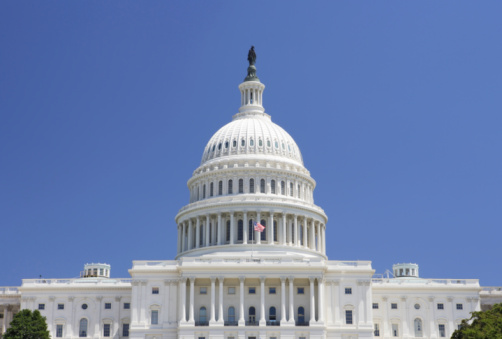From hurricanes to swine flu and even bioterrorism, the United States has repeatedly faced public health threats in recent years. Adequately managing a crisis involves cooperation between many different organizations, both in the private and public sector.
Click here to see the seven states least prepared for disaster
State governments are one of the main bodies to take on the challenge of handling a disaster, and not all states are equally prepared. Trust for America’s Health (TFAH), a nonprofit organization dedicated to disease prevention, published a report in conjunction with the Robert Wood Johnson Foundation, a large healthcare philanthropy, scoring states based on their readiness for a public health threat. 24/7 Wall St. reviewed the seven states least prepared to deal with these kinds of disasters.
TFAH analysts looked at such indicators as public health funding — whether it increased from 2011 to 2012, and infectious disease control and vaccinations — whether vaccines for whooping cough have been administered to 90% of infants and whether Medicaid covers flu shot. These indicators were specifically designed to show the level of readiness of all states regardless of the different disasters they may face, Executive Director of TFAH Jeff Levi told 24/7 Wall St.
For instance, all states are experiencing challenges with climate change, making it necessary for each to have firm plan to deal with the problem, which is one of the indicators the analysts looked when examining the level of a state’s preparedness. Similarly, since all states are at risk for some sort of public health disaster, states would greatly benefit from getting certified from the Emergency Management Accreditation Program, a non-profit program that set up 64 standards to determine whether a state can deal with an emergency. Having such a program is yet another indicator the analysts checked to find the level of preparedness.
If a state met a specific standard, it received a point, for a total of a possible 10 points. Of the seven worst-prepared states, five scored just four points, while two scored a mere three points. The seven worst prepared states failed in areas where the majority of other states managed to meet the standard. For instance, 30 states require child-care facilities to have a written multi-hazard evacuation and relocation plan, which the TFAH argues is imperative for protecting children in a vulnerable environment. Yet the only states in the bottom seven to have this policy are Hawaii and Nevada. Another 37 states have state lab facilities with enough staffing to adequately deal with and contain a disease such as swine flu. Yet Montana is the only one of the seven states on this list to have that capability.
Much of a state’s disaster readiness comes down to funding, which has taken a significant hit recently. TFAH notes that federal funds for state and local preparedness declined 38% between 2005 and 2012. Statewide, public health budgets have been declining in the last several years as well. In 29 states, public health funding was cut at the state level in 2012, including five of the seven least-prepared states.
Many a state’s resources on disaster preparedness, however, are out of the state’s control. For instance, the all-hazards preparedness funding comes in the form of block grants from the Department of Health and Human Services. Levi said the combined funding declines at the federal level and the states level have hurt some states disproportionately.
“When you’ve lost 25,000 to 30,000 jobs in state and local health departments across the country, that is a very diminished workforce,” Levi said. “The underlying base of public health (at the federal level) has also contracted, and that’s where you get this double whammy.”
One recent disaster that could have lasting health consequences is Superstorm Sandy. Levi believes that New Jersey, a state on this list, did a reasonably good job dealing with the storm despite displaying shortcomings in a host of different areas. He noted that in recent years states have learned much about response and relief efforts from a variety of different disasters, most notably Hurricane Katrina.
Also Read: America’s Busiest Border Towns
Based on the the 10 indicators put together by The Trust For America’s Health (TFAH,) 24/7 Wall St. reviewed the seven states that were least prepared for a public health disaster. We reviewed areas of strong and weak performance to provide context for each state’s readiness. We also considered total all-hazards funding from the federal government and public health budgets at the state level in both fiscal year 2011 and 2012, also from the report.
These are the seven states least prepared for a public health disaster.
7. Colorado
> Score: 4
> All-hazards preparedness funding: $15,489,507 (up 3.6%)
> Pct. change in public health funding: -3.9%
Colorado is among a small minority of states where Medicaid isn’t required to cover flu shots with no co-pay, leaving a large proportion of the population exposed to potential illnesses. In addition, the state does not have enough staffing capacity at its state health laboratories to deal with a potential breakout of an infectious disease. Less than one-third of other states share these distinctions. Colorado is one of just 14 states where public health funding has decreased for three consecutive years. The only indicator where Colorado fared better than the majority of states was that it participates in the Nurse Licensure Compact, one of just 24 states to do so. This program allows nurses registered in participating states to practice in all other participating states and could help Colorado obtain the medical staffing necessary in case of a public health emergency.
6. Georgia
Score: 4
All-hazards preparedness funding: $26,701,047 (up 2.3%)
Pct. change in public health funding: 1.2%
The good news for Georgia residents is that it was among the minority of states that increased its public health funding budget. However, Georgia was weaker than most states in a number of areas. Similar to many states with low scores, and unlike the majority of states, Medicaid in Georgia doesn’t cover flu shots without co-pays for those under 65. Georgia also doesn’t have a law requiring that child-care facilities have a multi-hazard evacuation plan. Another failure is that it can’t adequately staff its state health laboratory for 60 hours a week for six to eight weeks in a row in the case of an emergency.
Also Read: The States that Recovered Most (and Least) From the Recession
5. Hawaii
Score: 4
All-hazards preparedness funding: $6,818,950 (down 4.3%)
Pct. change in public health funding: 0.1%
Hawaii was by far the worst state in emergency operations coordinating capability. It took state officials 221 minutes to notify and immediately gather staff in the case of a public health crisis, more than three times longer than any other state in the country. Hawaii was also among one of just 14 states to not have enough staffing at state health labs to deal with a health disaster. Not all was bad for Hawaii, though. The state was just one of two to meet an HHS goal of immunizing 90% of infants between the ages of 19 and 35 months for whooping cough. The only state to perform better was Nebraska, with a 92.3% immunization rate.
4. Nevada
Score: 4
All-hazards preparedness funding: $10,105,858 (up 3.8%)
Pct. change in public health funding: -5.1%
Although Nevada’s all-hazards preparedness funding was up 3.8% in 2012 compared to the prior year, its public health funding fell more than 5%, the third straight year of decline. Nevada had the lowest reported rate of infants receiving immunization for whooping cough at just 75.2%, although the state had a lower incidence rate of the disease compared to the country as a whole. Like many states, Nevada lacks a complete climate change adaptation plan. However, Nevada did well in response time in the case of a public health crisis. It took just 14 minutes to notify and immediately gather staff in these cases, which is significantly faster than the majority of states.
3. New Jersey
Score: 4
All-hazards preparedness funding: $25,586,974 (down 1.4%)
Pct. change in public health funding: -1.3%
Among New Jersey’s shortcomings was the fact that public health funding declined, the state was ill-equipped to staff a public health lab in an emergency and it lacked a climate change adaptation plan. New Jersey’s disaster preparedness was recently, and continues to be, tested with Superstorm Sandy. Levi, from TFAH, pointed out that New Jersey was able to handle the disaster well given the tireless efforts of state employees, medical personnel and volunteers. But TFAH noted in the report that even as the initial disaster has faded away, those affected by the storm, including many New Jersey residents, continue to face disaster risks. Some of the problems pointed out by the group include unsafe drinking water, carbon monoxide poisoning and asbestos exposure.
2. Kansas
Score: 3
All-hazards preparedness funding: $10,309,363 (up 2.8%)
Pct. change in public health funding: -6.0%
Kansas is one of just two states that met only three of the 10 TFAH standards for disaster readiness. Among the state’s shortcomings are its lack of a climate change adaptation plan, no accreditation by the Emergency Management Accreditation Program, and the fact that the state did not have staffing levels available at health labs to adequately deal with a disease outbreak. State officials in Kansas have taken issue with the state’s place in the ranking, arguing, among other things, that changes in the formula for federal funds hurt rural states such as Kansas. But while federal all-hazards preparedness funding was up, state funding actually declined by 6%.
Also Read: The States Doling Out the Best (and Worst) Benefits
1. Montana
Score: 3
All-hazards preparedness funding: $5,884,938 (down 11.9%)
Pct. change in public health funding: -21.0%
Much of Montana’s limited preparedness for public health disasters can probably be explained by a lack of funding, according to TFAH. Total all-hazards preparedness funding dropped 11.9% between 2011 and 2012, one of the largest drops of all states. To exacerbate the problem, the 21% drop in state public health was the worst of all states. Montana is among the minority of states that has not been accredited by the Emergency Management Accreditation Program. In addition, only 76.8% of infants ended up getting immunized for whooping cough, lower than all but a handful of states. This is despite the fact that Montana has an incidence rate of the disease nearly four times that of the country as a whole.
Want to Retire Early? Start Here (Sponsor)
Want retirement to come a few years earlier than you’d planned? Or are you ready to retire now, but want an extra set of eyes on your finances?
Now you can speak with up to 3 financial experts in your area for FREE. By simply clicking here you can begin to match with financial professionals who can help you build your plan to retire early. And the best part? The first conversation with them is free.
Click here to match with up to 3 financial pros who would be excited to help you make financial decisions.
Thank you for reading! Have some feedback for us?
Contact the 24/7 Wall St. editorial team.



